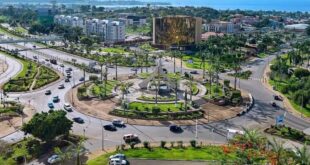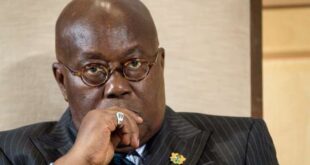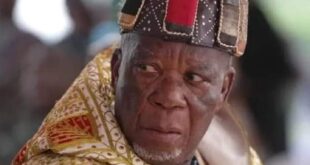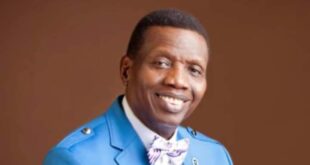
“…A major confrontation at Daboya dealt a lot of damage to the Dagomba people. Naa Tutugri retaliated by defeating the Gonja near Yen-Dabari, but his successor, Naa Luro, though victorious over the Gonja in a later battle, could not stand the sustained warfare and relocated the capital to Yendi. The Gonja followed eastward, they pushed us (Dagombas), from Naa Zagale, Naa Zokuli (Dawuni), Naa Gugobili (Wumbei) but in 1713, Naa Zangina finally halted the Gonja attacks when he decisively defeated them and killed their chief, Kumpatia, at Sang near Yendi. Andani Sigli (later Naa Andani Sigli after Naa Zagina) was the hero on that famous battle”, Ibrahim Hardi, a Dagomba writes.
But below is what seems to be a direct response from Mahama Haruna, also a Gonja by tribe. He begins his response with a question.
Were Gonjas really defeated by Dagombas? Indeed history is sometimes distorted depending on the narrator.
Several accounts of Gonja history have been published, all of them based very largely on the corpus of oral tradition which Jones (1962) has called the ‘Jakpa epic’. Jakpa was a mighty warrior ‘from Mande’, who fought his way across Gonja from west to east, and then, before he was killed in battle, shared out the lands which were his by right of conquest among his sons. By the end of his death the present Gonja Traditional Area was established fully as a centralized state under his sole leadership in 1675. The earliest recorded version of the Jakpa epic, in substantially its modern form, Is to be found in an Arabic chronicle written in the 18901s (El-Wakkad and WMks, 1962).
Gonja history says Ndewura Jakpa or Lanta led an invasion against Dagomba. He carried out further conquest taking the important salt-producing centre of Daboya from the Dagomba.
It is said Jakpa turned his attention on the land on the Western banks of the White Volta River after conquering the Bole area. The area was inhabited by the Tampulmas were subjects of the Dagomba Kings who appointed their representatives to administer the area and also control the salt-making by the natives in Burugu (later to be known as Daboya by the Gonja).
Jakpa went into combat with the Dagombas dislodging them on the western side and followed them up to the Eastern side where there ensued a fierce battle and very heavy casualy were suffered on both sides. In the end the Dagombas were defeated and their King Na Dariziogo slain. Many Dagomba towns were captured to include Gbirimani (Birimani), which came under the jurisdiction of Kpembi and Kasulyili under the Wasipewura.
Ndewura Jakpa then placed Burugu (Daboya) under the authority of his daughter who accepted the title Burugu-Wurche (Queen of Burugu). She was left with a small garrison under her command.
The strategic importance of Daboya to the Gonja and also to the Dagbamba was in no doubt because it was the gate-way to the western corridor of the food producing country of the Tamplumas who incidentally were also a very brave fighting force who must be conquered and assimilated strategically to act as a buffer to Dagomba expansion bid to the west of the river. Beside Burugu/Daboya itself was economically and socially important due to the salt making industry and the resourcefulness of the river which earned the town its name Daboya (meaning our brother is better than us).
These benefits indicated above and other factors urged the Dagombas to continue to make persistent military incursions into Daboya and surrounding villages. This necessitated the removal of the Wasipewura by Jakpa from Wasipe in the Bole area to Daboya to reinforce the garrison and control the salt-making industry. The Daboya chief continued to be called Wasipewura to this day.
There is yet another story of how Gonjas took over one of the biggest land from Dagombas (Kusawgu Traditional Area).
Kusawgu means ‘obtained through war’; (Nko- nsor) in Gonja. Legend says that after Ndewura Jakpa had conquered so much land he distributed it among his sons and daughter (Burwurche). He did not however allocate any to his youngest son, the first Kusawguwura. Ndewura Jakpa rather asked him to join any of his older brothers of his choice. The first Kusawguwura realising his position got himself an army and fought till he conquered what is now Kusawgu.
Today the Kusawgu Traditional runs from around Fufulso (Damongo junction) to the south to Datoyili in Tamale.
By Mahama Haruna, Writer/Author
 Savannah News Online Reporting Only What Matters Most
Savannah News Online Reporting Only What Matters Most



